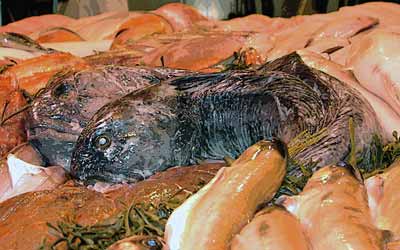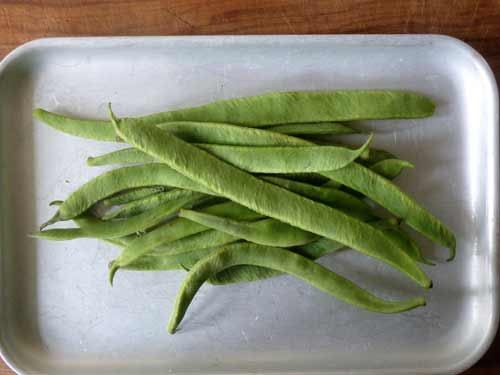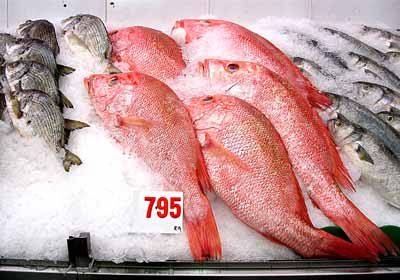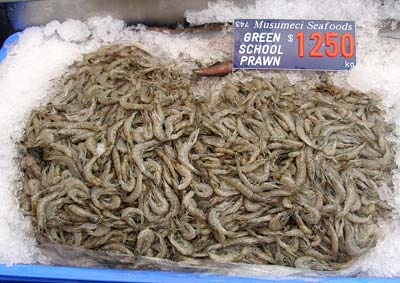
Wolf-fish. Marine catfish. A fish of northern waters. It is medium oily and white-fleshed. Since it eats shellfish, its own flavour is good. Its jaws are strong and it has a blunt head which lend to its unattractive appearance, which is why it is normally sold filleted or in cutlets. It has few small bones and can be prepared in the same way as monkfish (US: angler fish), in stews or grilled. It is sometimes sold as rock salmon or rock turbot.

Introduced from Mexico to Europe in mid 17th Century, usually grown as an annual. Best from early June to end of September.

A name for the saddletail seaperch, a striking red fish with no stripes or spots caught in the tropical waters of northern Australia over reefs and soft bottoms. Is usually found at around 70 cm (28") in size, though the ones in the picture are smaller and provides well-flavoured, flaky meat. It is sometimes sold as red emperor.

A name for school prawns. Other prawns may be sold under the name of school prawns, in particular bay prawns and Endeavour prawns. However, they are most commonly Metapenaeus macleayi, which is translucent (looking grey when heaped up in the market) with green or brown speckling. They are usually around 8 cm (3") in total body length. They are fished in sandy bottoms near river mouths.

Other prawns may be sold under the name of school prawns, in particular bay prawns and Endeavour prawns. However, they are most commonly Metapenaeus macleayi, which is translucent (looking grey when heaped up in the market) with green or brown speckling. They are usually around 8 cm (3") in total body length. They are fished in sandy bottoms near river mouths.
School, tope or soupfin shark. The meat of the school shark is consumed in Spanish cuisine where it is usually known as cazon. Among recipes are the traditional "Cazon en adobo". In Mexican cuisine the term cazon refers to other species, and is prepared similarly.